Why shipping container homes are overrated – Vox YouTube Channel
Blog
Why Alleys Are the Most Important Spaces in a City
Why Alleys Are the Most Important Spaces in a City – Stewart Hicks YouTube Channel
American Suburbs are UGLY and We Should Be Ashamed
American Suburbs are UGLY and We Should Be Ashamed – Peter Davies YouTube Channel
The Gym of Life
The Gym of Life – Not Just Bikes YouTube Channel
Motivation
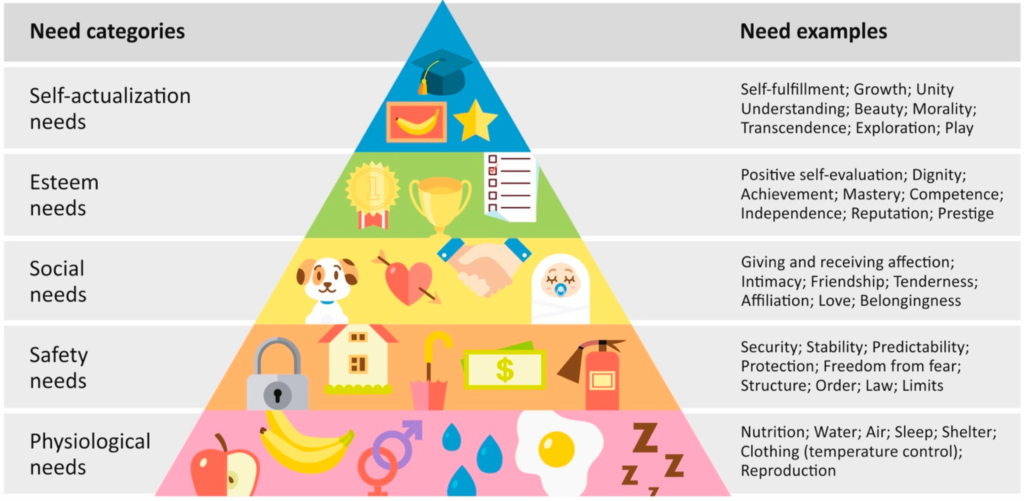
I) Deficiency Needs
A) Basic Needs
1. Physiological Needs
-
-
- Air
- Water
- Food
- Light
- Heat (and cooling)
- Clothes
- Shelter
- Rest/Sleep
- Urination/Excretion
-
2. Safety Needs
-
-
- Personal security
- Financial security
- Emotional security
- Health
-
B) Psychological Needs
3. Belonging Needs
-
-
- Family
- Friendship
- Love
- Intimacy
- Trust
- Acceptance
- Receiving and giving love and affection
-
4. Esteem Needs
-
-
- Self-Esteem
- Dignity
- Achievement
- Mastery
- Independence
- Esteem from Others
- Reputation
- Respect
- Status
- Prestige
- Self-Esteem
-
II) Growth Needs
A) Self-Fulfilment Needs
5. Cognitive Needs
-
-
- Knowledge/Exploration
- Understanding/Curiosity
- Meaning/Purpose
- Predictability
-
6. Aesthetic Needs
-
-
- Nature’s Splendor
- Built Environment Art
- Durable goods (pottery, basket-weaving, etc.)
- Landscaping
- Architecture
- Visual Art
- Drawings & Sculpture
- Photography
- Film/Video
- Auditory Art
- Music
- Poetry
- Literature
- Performing Arts
- Musical Performance
- Drama
- Dance
-
7. Self-actualization
-
-
- Realizing personal potential
- Self-fulfillment
- Seeking personal growth and peak experiences
-
8. Transcendence
-
-
- Service to others
- Pursuit of science
- Religious faith
-
Every neighborhood should have a corner store—but can’t
Every neighborhood should have a corner store—but can’t – City Beautiful YouTube Channel
-
-
- Physical Design & Walkability
- Entrepreneurship
-
-
-
- Healthy and affordable food
-
Zoning reform needed.
Alternatives to Sprawl: Case Studies in Building Better ‘Burbs
Alternatives to Sprawl: Case Studies in Building Better ‘Burbs – Eco Gecko YouTube Channel
The Surprising Way Small Towns Are Disappearing
The Surprising Way Small Towns Are Disappearing – City Beautiful YouTube Channel
The Wrong Way to Set Speed Limits
The Wrong Way to Set Speed Limits [ST06] – Not Just Bikes YouTube Channel
The Right Roof
1.0 Petroleum-Based Roofs
(From: bobvila.com and other sources.)
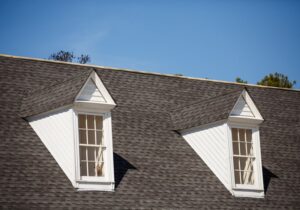
1.1 Asphalt Shingle Roof
Economical to produce, relatively easy to install, and widely available, fiberglass asphalt shingles are today’s most popular roofing material. Made of a woven fiberglass base mat, covered with a waterproof asphalt coating and topped with ceramic granules that shield the product from harmful UV rays, they are available in a full range of styles and colors to complement any home’s architectural style. Most are guaranteed to 30 years.
-
-
- Estimated Lifespan: 15-30 years
- Cost: $150 – $550 per square installed
- Frequent replacement cost every 10-20 years
- Re-caulking and sealing as roof ages
- Ends up in landfills after short lifespan where it can take 300 years to decompose
-
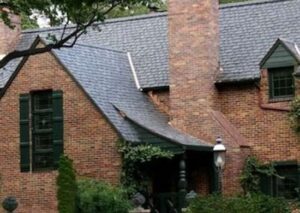
1.2 Composite Shingle Roof
If you want the look of slate, tile or wood shake—without the installation and maintenance costs, consider today’s composite roofing. Made from poly-based products, companies like CertainTeed, EcoStar and DaVinci Roofscapes all offer superior products that are lightweight, fade resistant, fire safe, and warrantied for up to 50 years. Some are so realistic that they have been approved for use in historic preservation!
-
-
- Estimated Lifespan: 15-40 years
- Cost: $400 – $800 per square installed
-
2.0 Combustible Roofs
(From: bobvila.com and other sources.)
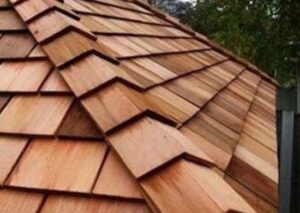
2.1 Wood Shingle Roofs
Wood shingles are machine-cut and tapered for a trim, crisp appearance. While not as practical as modern asphalt shingles, there is no denying the appeal of a wood roof on a traditional or historical-style house.
-
-
- Estimated Lifespan: 25-30 years
- Cost: $450 – $900 per square installed
-
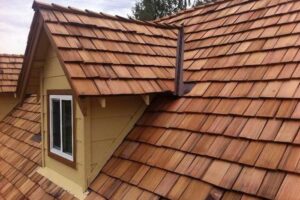
2.2 Wood Shake Roofs
Wood shakes are hand-split, giving them a more rustic appeal. While not as practical as modern asphalt shingles, there is no denying the appeal of a wood roof on a traditional or historical-style house.
-
-
- Estimated Lifespan: 35-40 years
- Cost: $600 – $900 per square installed
-
3.0 Noncombustible Tile Roofs
(From: bobvila.com and other sources.)
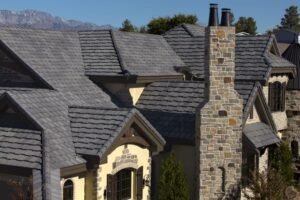
3.1 Concrete Tile Roofs
In addition to their intrinsic beauty, tile roofs are extremely durable, lasting for centuries in some cases. Individual tiles are often molded in barrel shapes for interlocking installation. Weight will be an issue, so be sure ask a structural engineer if your roof framing will support a tile application.
-
-
- Estimated Lifespan: 50 years
- Cost: $400 – $1,000 per square installed
-
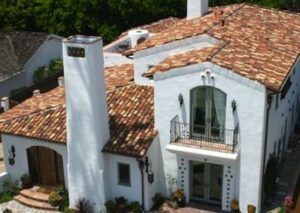
3.2 Terracotta (Clay) Tile Roofs
In addition to their intrinsic beauty, tile roofs are extremely durable, lasting for centuries in some cases. Individual tiles are often molded in barrel shapes for interlocking installation. Weight will be an issue, so be sure ask a structural engineer if your roof framing will support a tile application.
-
-
- Estimated Lifespan: 50-100 years
- Cost: $600 – $1,500 per square installed
-
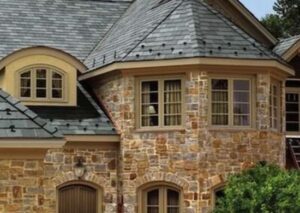
3.3 Slate Tile Roofs
Slate quarried for roofing is dense, sound rock, and is exceedingly tough and durable. While it is labor-intensive and costly to install, a natural slate look will give character to a building unlike any other roofing material. Available in an array of colorations, slate roofing is non-combustible, waterproof, and requires little to no maintenance over the course of its long life.
-
-
- Estimated Lifespan: 100 years or more
- Cost: $900 – $1,600 per square installed
-
4.0 Noncombustible Metal Roofs
(From: metalroofing.com and other sources.)
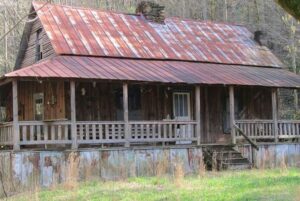
4.1 Tin Roofs
Tin is no longer used. Today, a “tin roof” might refer to steel.
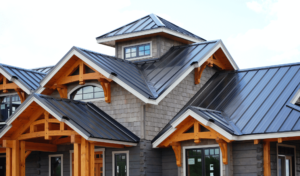
4.2 Steel Roofs
Steel is the most common type of metal roofing, available in different finishes.
-
-
- Estimated Lifespan: Average of 40 years
- Up to 30% energy savings
- Cost: $900 – $1,000 per square installed
- Improves home resale value
-
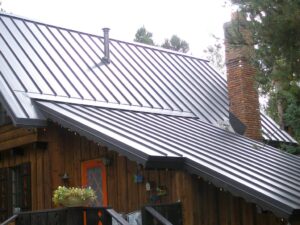
4.3 Zinc Roofs
Zinc is a very long-lasting and expensive roofing material that will patina and change color.
-
-
- Estimated Lifespan: 60-100 years
- Up to 30% energy savings
- Cost: $550 – $1,000 per square installed
- Improves home resale value
-
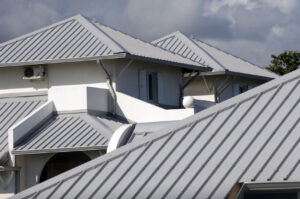
4.4 Aluminum Roofs
Aluminum is lightweight, does not corrode, and is compatible with coastal environments.
-
-
- Estimated Lifespan: Average of 50 years
- Up to 30% energy savings
- Cost: $1,000 – $1,250 per square installed
- Improves home resale value
-
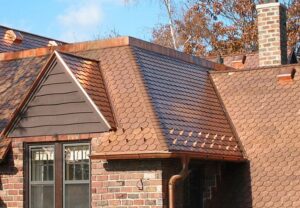
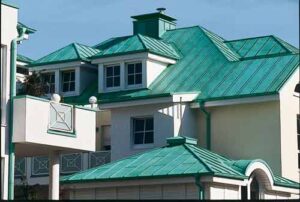
4.5 Copper Roofs
Copper is a very long-lasting roof that will develop a protective layer and change color. It is the most expensive roofing material.
-
-
- Estimated Lifespan: 50-100 years
- Up to 30% energy savings
- Cost: $1,100 – $1,500 per square installed
- Improves home resale value
-
5.0 Green Roofs
(From: greenrooftechnology.com and other sources.)
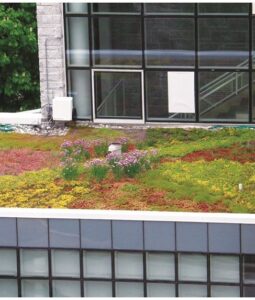
5.1 Extensive Green Roofs
An extensive green roof represents a natural form of vegetation that is largely self-sustaining and evolving. It is the most cost effective and most natural infrastructure to reduce stormwater run-off from buildings at the source.
-
-
- Variable energy savings
- Cost: Variable
-
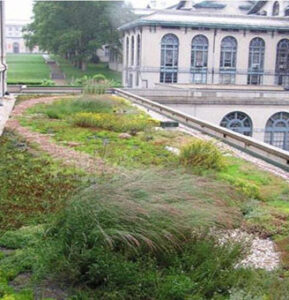
5.2 Semi-Intensive Green Roofs
A Semi-intensive Green Roof represents an enhanced natural form of vegetation, often self-sustaining and evolving. Certainly, it is still cost effective and a bio-diverse natural infrastructure to reduce stormwater run-off from buildings. Additionally, semi-intensive Green Roofs widely restore the environmental footprint of a structure, as it is proven to be rich in biodiversity and with high stormwater retention.
-
-
- Variable energy savings
- Cost: Variable
-
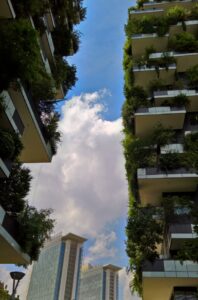
5.3 Intensive Green Roofs/Roof Garden
An Intensive Green Roof or Roof Garden includes unlimited plant and design varieties. Likewise in open space planning, which allows any form of vegetation. Intensive greening may consist of perennials, grasses, bulbs, summer flowers, shrubs and large trees. Because of high maintenance requirements, Lawn is considered an intensive Green Roof. However, the general maintenance of intensive Green Roofs without lawn is less than most people would expect. Of Course, this all depends on plant selection and overall design.
-
-
- Variable energy savings
- Cost: Variable
-
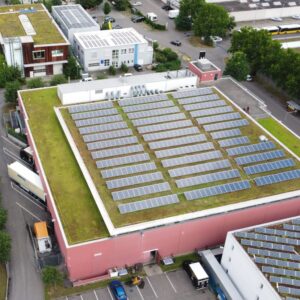
5.4 Solar Garden Roofs
Green Roof Technology’s Solar Green Roof solutions are innovative, penetrations-free, and for flat roofs, sloped or curved roofs. Furthermore, all solutions have Blue Green Roof options.
-
-
- Variable energy savings
- Cost: Variable
-
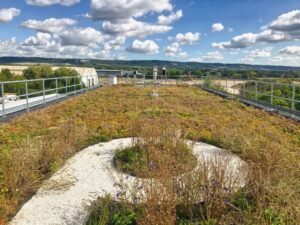
5.5 Blue Green Roofs
on Blue Green Roofs water is retained and detained in an engineered drainage media layer within the Green Roof system and controlled by smart drains.
-
-
- Variable energy savings
- Cost: Variable
-
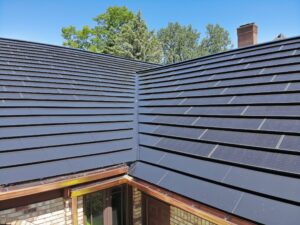
5.6 Solar Shingle Roofs
Solar power shingles, also known as photovoltaic shingles, are solar panels that mimic the appearance and function of conventional roofing materials like asphalt or slate, while performing their core task of generating electricity.
-
-
- Estimated Lifespan: 25-30 years
- Variable energy savings
- Cost: $2,100 – $2,500 per square installed
-
